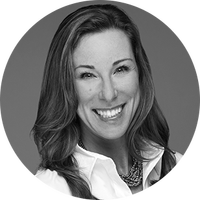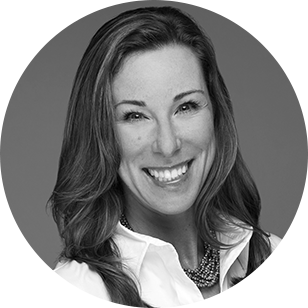5 secrets your hairdresser doesn't want you to know
You know those products he wants you to buy? Stay away from them.


O'ahu-based hairstylist Habib Alaei has been around the block. Around the world, actually. Born in Iran and raised in Germany, Habib literally grew up in the hair salon and cosmetology school owned by his mother; the family home was in the same building. He recalls cutting his first head of hair at the age of 12. Habib emigrated to the United States decades ago, and made his way across the country entire country to Hawaii … cutting, styling, and coloring hair all the way.
Today Habib's eponymous studio in Honolulu's posh Kahala district is one of the most talked-about salons in the state. Habib himself maintains a client list of 350 (including celebrities, socialites, business magnates and a handful of regular people he just likes) with more always clamoring for an appointment. He's very, very good at what he does … and, having attained the confidence and stature of a man on top of his profession, he can afford to be honest about it.
Following are five insider secrets Habib is willing to share with his exclusive clientele … and now with the rest of us.
The Week
Escape your echo chamber. Get the facts behind the news, plus analysis from multiple perspectives.

Sign up for The Week's Free Newsletters
From our morning news briefing to a weekly Good News Newsletter, get the best of The Week delivered directly to your inbox.
From our morning news briefing to a weekly Good News Newsletter, get the best of The Week delivered directly to your inbox.
1) A hairdresser makes a lot of money off those products he's always recommending you buy.
"Many salons make as much money from product sales than they do from services," Habib confides. "Stylists are pressured to make sales because their income depends upon moving inventory. My philosophy is different."
Put another way — Habib is not inexpensive. He charges for his services what he believes they are worth. ("It is up to an artist to set the value on his own work.") In return, Habib's clients know he will not try to load them up with expensive bottles of stuff they don't need. This isn't to say Habib doesn't encourage his clients to use good hair-care products — he does — he just doesn't base his business model on ordering and selling them.
"My clients know that when I recommend they go somewhere and buy a certain conditioner or styling aid, it's because it will make a difference to their look. And when they like the way they look, they will keep coming back to me to update and evolve that look beautifully, year after year after year."
A free daily email with the biggest news stories of the day – and the best features from TheWeek.com
So if your stylist is pushing a lot of product on you, be wary — especially if he works out of a salon that offers cut-rate prices on services.
2) It frustrates him when you come in with no idea of what you want to do with your hair … almost as much as it bugs him it when you won't take his advice.
A good stylist is a combination of artist, psychologist, and rainmaker; he can change your look, your mood, and your self-image with a snip of his scissors and a wave of his flatiron. What he isn't? A mind-reader.
"Don't come in and say 'whatever' to me; you won't like the result," says Habib. Why? "Because people inevitably have an internal vision of how they would like to appear to the world, and if you don't communicate that to your stylist, he or she is left to guess."
And busy professionals don't like to play guessing games. Bring a picture of someone with a look you admire in to your appointment; it gives you and your stylist a good starting point. But don't be married to the exact cut or color in that picture, either.
"Hair is as unique as the individual," says Habib. "Some hair textures and growth patterns will not accommodate certain cuts."
And color is even trickier. "Hair and skin tone must match," says Habib. An olive-skinned brunette who insists on dying his hair a light ash blond will look sallow; similarly, a porcelain blond who wants warm brown locks must be warned that gold tones will wash her out.
Habib tries not to argue with his clients. Rather, he persuades.
"I will say something like 'Certainly, if you like, I can take your hair back to the black it was when you were young. But visualize yourself with such dark hair now. Is it possible that could impact your complexion?"
To your stylist, who is an expert, you are a walking advertisement of his skill. If he's warning you off something, listen to him. He wants you both to look good.
3) There is no reason you can't use store-bought color to touch up your own roots in between lengthy and expensive color sessions.
If there's one thing a money-motivated hairstylist likes better than a client willing to lay down her credit card for multiple tubes of hair goo, it's a client with a few gray hairs coming in — because color services are extremely lucrative, and once clients start covering up, they're committed. Little looks worse than a band of off-color hair along one's hairline. And since people only get grayer with age, that means the length of time between two-hour, three-figure sessions gets shorter and shorter as the years march on.
For the client, that can get pretty costly, both in terms of time and money.
That doesn't have to be the case, says Habib.
"My clients are extremely busy people. Many maintain multiple residences off-island. They cannot come every two-to-four weeks for a touchup, so I am happy to work with them to pinpoint an over-the-counter product that they may use themselves to mask the gray in between longer, multi-step color sessions at the salon."
Stylists more interested in your money than your convenience will decry the use of store-bought product for this purpose. Don't listen to them. Find a new stylist who is more interested in your loyalty than your pocketbook.
4) He gives preference to clients who treat him well.
Speaking of loyalty … it goes both ways. Stylists definitely play favorites amongst their clients. Those who are respectful, pleasant, and grateful are far more likely to score that last-minute appointment or extra service at no cost than those who perennially show up late or fail to appropriately express their thanks.
"Start when you make that first call to set up an initial appointment," Habib recommends. "Tell the stylist who referred you; this gives you an immediate point of connection that will allow you to have a good conversation.
"Don't ask a stylist how much he or she charges," during that first call, says Habib. A popular pro with a robust client list probably won't even offer you an appointment. If budget is a concern to you, go to a chain salon with advertised prices. If you have the money to pay a more expert independent stylist but are simply curious about the rates, tell the stylist you plan to pay in cash, and "discreetly enquire how much you should pull out of the ATM before the appointment," says Habib. This shows respect.
Habib has a few other suggestions as well:
"Be on time."
"Bring positive energy to the salon!"
"Make your next appointment as you leave; this shows loyalty and respect for his busy calendar."
And most important? "Tip," says Habib. "A tip says 'thank you.' Whether your stylist is renting her first chair in a salon or owns the entire place outright, a tip says, 'I love what you've done for me.' To a stylist, this appreciation is even more important than the money."
5) He will break up with you if you are difficult.
This last secret is one I actually had to force out of Habib, because he is exquisitely courteous and nice. As a rule, most hairstylists are. The ones I've met describe feeling called to the profession because they love making others look and feel good. They want your time in their salon to be enjoyable, and they want you to leave feeling on top of the world… so they are usually incredibly gracious and kind, even to clients who don't reciprocate. As a result, we feel valued and important.
However… If you show up late to every appointment demanding the stylist (and every other client on the schedule that day) accommodate your mistake; if you are curt to the staff and spend the appointment rudely yammering on the phone; if you refuse to communicate your desires clearly or accept suggestions gracefully but still complain about the result; if you under tip or are just not a pleasant person to be around in general… guess what's going to happen?
"The next time you call, I might say my next opening isn't until February of 2018," admits Habib a little sheepishly. A consummate gentleman, he is reluctant to treat anyone rudely. But if a bad client presses and insists she wants to return, "Then it's time for a conversation."
Habib, a gentleman to the core, will kick a problematic client to the curb. Politely, of course. So will most good hairstylists.
So be nice, respectful, and grateful … and rock that new haircut.
Leslie Turnbull is a Harvard-educated anthropologist with over 20 years' experience as a development officer and consultant. She cares for three children, two dogs, and one husband. When not sticking her nose into other peoples' business, she enjoys surfing, cooking, and writing (often bad) poetry.


